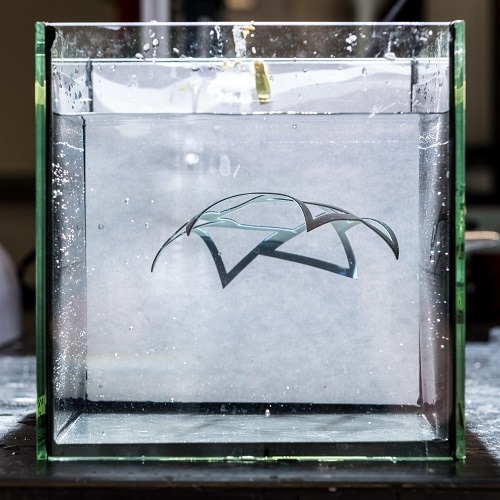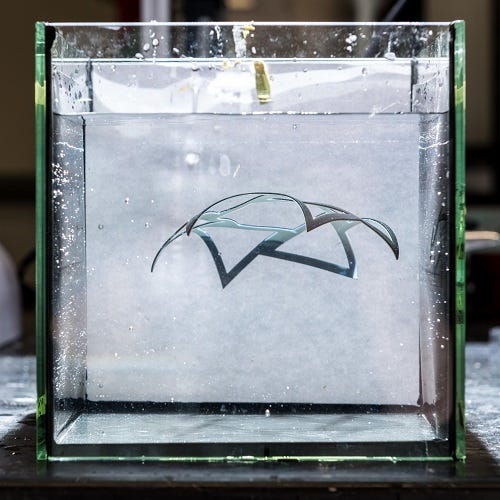3D-Printing Method Creates Shape-Shifting Objects That Change Permanently
A cross-institutional team of researchers has developed a new 3D-printing method that creates objects that can change their original shapes permanently in response to heat.
July 26, 2017

Researchers from Georgia Institute of Technology (Georgia Tech), Singapore University of Technology and Design (SUTD), and Xi’an Jiaotong University in China developed the objects by printing layers of shape-memory polymers that each respond differently when exposed to heat.
The team used computational simulations to design composite components in which the stiff material has a shape and size that prevents the release of the programmed internal stress from the soft material after 3D printing, said Jerry Qi, a professor in the George W. Woodruff School of Mechanical Engineering at Georgia Tech. Upon heating, the stiff material softens and allows the soft material to release its stress and this results in a change in the product shape.
“In our new approach, the part is composed of two materials, one is soft and one is stiff,” he told Design News in an interview. “We use their property difference as well as some residual strain developed during the printing process to drive the shape change. The second shape can be designed by carefully placing the two materials at different spatial locations in the part and the printing parameters.”
|
An object printed with a new 3D-printing method that allows for permanent shape shifting in response to heat. A cross-institutional team of researchers from three universities has developed the method, which has applications for biomedical devices, toys, robots, as well as others. (Source: Georgia Institute of Technology) |
While other 3D-printing methods devised by researchers have allowed for shape-shifting objects, those objects would change back to the printed shape once the environment changes, Qi said. The new method is novel in that the object that shifts stays that way, he said.
Another advantage to the method is that it is easy to implement, which means a complicated shape change can be achieved quickly and easily, Qi added.
The new 4D objects created by the method can provide various new product features, such as allowing products that could be stacked flat or rolled for shipping and then expanded once in use, researchers said.
The design also is ideal for applications where a designer would like to have the part to change from one complicated shape to another one—“for example, a biomedical stent or biomedical devices that can be used in minimum invasive surgery,” he said. “It may also have the potential for use in electronic devices, or packaging, where some initial parts are put together but later can assemble into a new structure.”
Other applications for the method include the design of robots and toys that have similar design needs, researchers said. They published a paper on their work in a recent edition of the journal Science Advances.
Qi’s team currently is using a commercial printer, which limits their choice of materials. In the future, he said the team hopes to have more materials available to them for better control and better designs.
Researchers are continuing their work to integrate the method into formal design tools, Qi added.
“We are also exploring potential application for deployable structures and devices in our lab,” he said. “We are also open to industrial collaborations so that our work can be transferred to practical industrial applications.”
Elizabeth Montalbano is a freelance writer who has written about technology and culture for more than 15 years. She currently resides in a village on the southwest coast of Portugal.
About the Author(s)
You May Also Like




